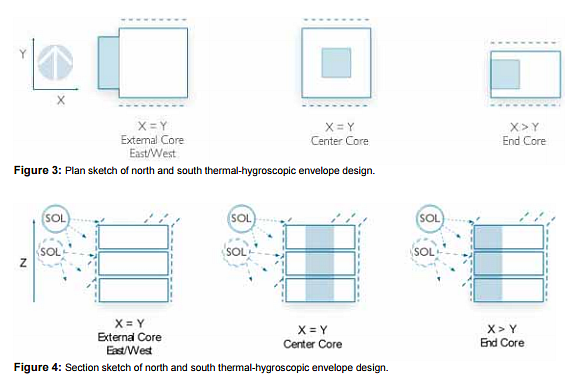ABSTRACT: The paper will discuss the design of a bi-directional thermo-hygroscopic façade as a dedicated outdoor air system to cool and dehumidify outside air. The system is a variant of dedicated outdoor air systems to separate dehumidification and cooling in air-conditioning equipment and locates components within the building envelope. The integrated hybrid-building envelope relies on low-grade thermal energy to regenerate the liquid desiccant from southerly and northerly exposure. Southern and northern exposed walls with solution desiccant regenerator, dehumidifiers and direct evaporative cooler provide similar function as a conventional vapor compression air-conditioning system. Liquid desiccant regenerates with temperatures as low as 50ºC (122ºF). The consolidation of components for air-conditioning within the building envelope offers architectural expression and system adjacency to a source of fresh air. The use of the direct evaporative cooler makes use of cool dry dehumidified air to cool chilled water for use in radiant ceiling panels instead of conventional air conditioning equipment and refrigerant to minimize the impact to the environment. Regenerative liquid desiccant thermal walls use low-grade source of heat to reduce system energy consumption and reliance on sources of refrigerant to provide cooling and dehumidification.
REFERENCE URL:
CITATION:
Marionyt Tyrone Marshall (2015). “Bi-directional thermo-hygroscopic facades: Feasibility for liquid desiccant thermal walls to provide cooling in a small-office building, ” Future of Architecture Research of Architecture Research Centers Consortium, Chicago, Illinois, April 6-9, 2015.

